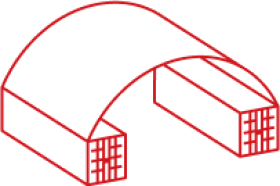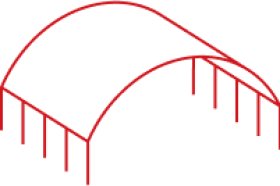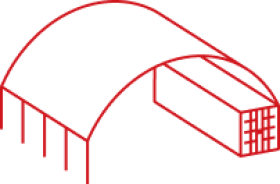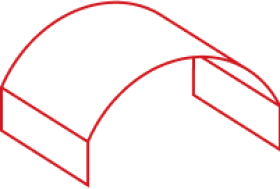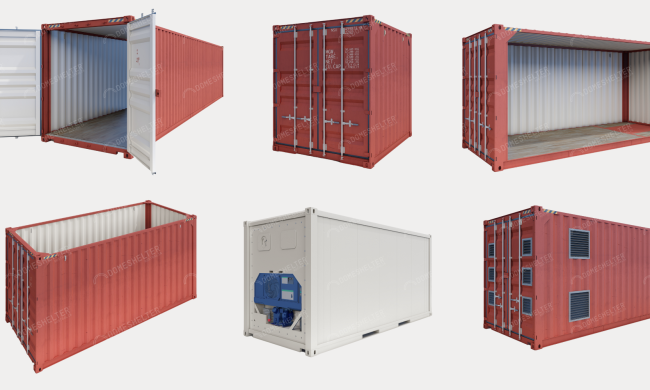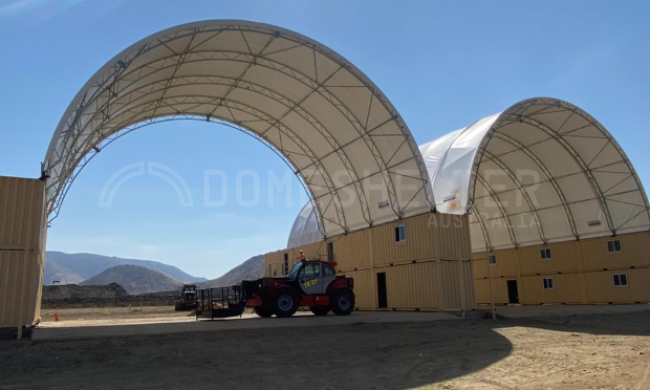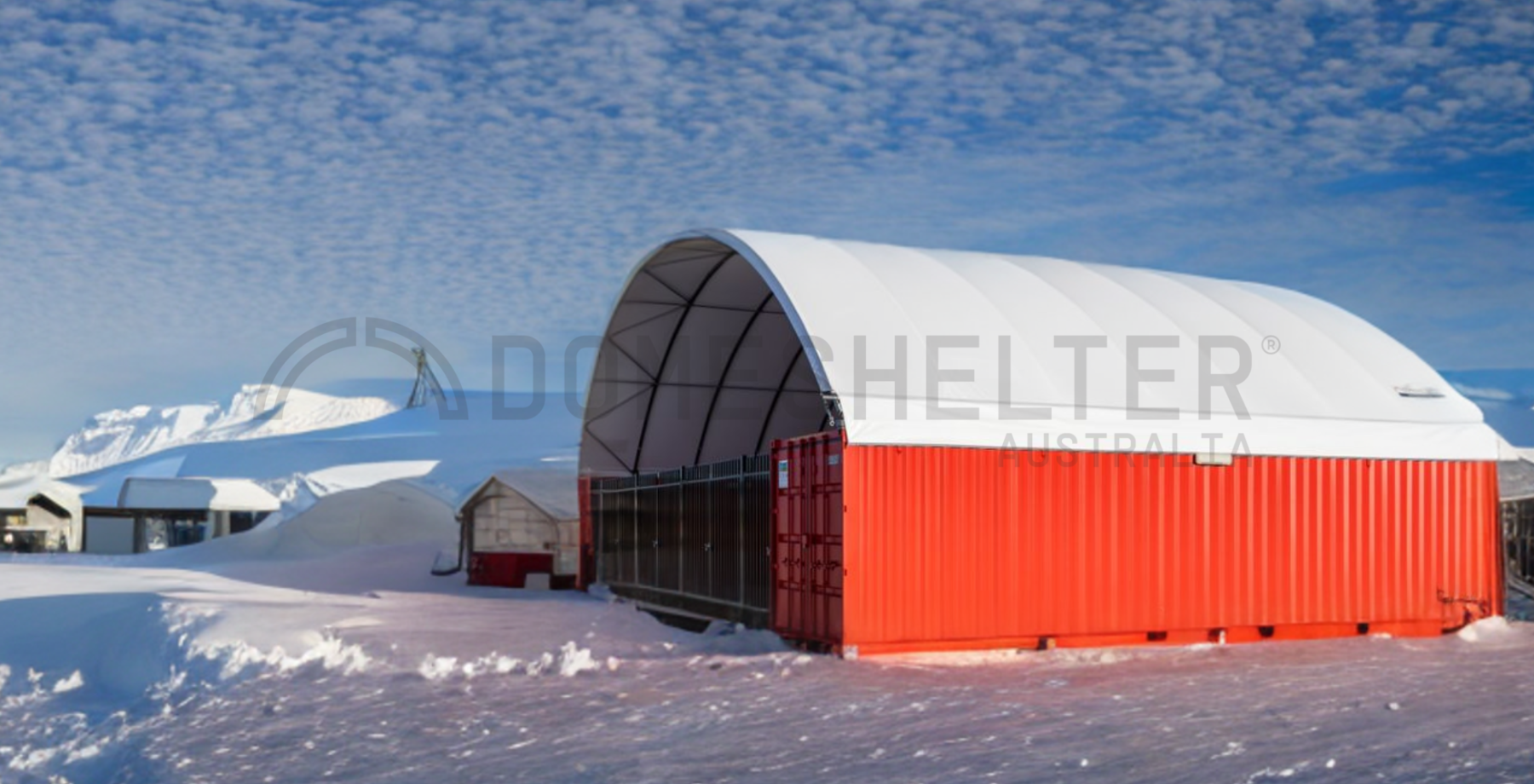
When it comes to investing in infrastructure, it’s essential to consider the environment it will be exposed to, especially if you live in an area prone to heavy snowfall. In Australia, there are designated snow regions classified by the Australian Standard AS1170.3:2003. If you’re looking for a shelter to protect your equipment or assets in these areas, you may be wondering if DomeShelter™ Structures are rated for snow. In this article, we will explore the different snow regions in Australia, the relevant building standards, and how our Shelters are engineered to withstand heavy snow loads.
What is a Snow Rating?
A snow rating is a measurement that indicates the snow load or amount of snow a Structure can withstand before it fails. Snow load is a crucial factor when designing Structures in areas with heavy snowfall.
Extreme snow loading can cause roofs to collapse, walls to buckle, and buildings to fail. Therefore, it is essential to ensure that the Structure is designed and engineered to withstand the expected snow load in the area where it will be installed.
Snow loads in Australia are restricted to alpine zones, with the rest of the country not experiencing significant snowfall. In these locations, buildings have to be designed to withstand the appropriate amount of snow. The size of the snow load depends on the altitude of the area.
Snow loading and all related information is outlined in the Building Code of Australia; AS/NZS 1170.3:2003 Structural Design Actions – Snow and Ice Actions.
- Alpine areas are defined as those which are 1200m or more above Australian Height Datum (AHD) for NSW, ACT and Victoria, and 900m or more above AHD for Tasmania.
- Sub-alpine areas are 600-1200m above AHD in NSW, ACT and Victoria, and between 300-900m in Tasmania.
The BCA requirements only apply to alpine and sub-alpine areas in which the snow loads are considered significant. In some sub-alpine areas, snowfall is not likely to be successive enough to accumulate and therefore the snow loading standards do not apply.
A building must be designed to safely withstand the most severe combination of forces or loads likely to be applied during its lifetime. To account for snow load actions in the areas defined in AS/NZS1170.3:2003 is critical, especially considering that all of these areas are located in wind region A. Being located in the lowest wind region would result in lightweight designs suited to minimal pressure if only wind actions were checked.
Are DomeShelter™ Structures Rated for Snow?
Like any kind of Structure, Fabric Shelters can be engineered to suit the codes for effectiveness in snow. DomeShelter Australia designs all Structures in full compliance with the Building Code of Australia, with a dedicated in-house engineering team who is experienced with the Code in all aspects.
We have designed Shelters for a range of snow load situations, including the Mt Hotham Ski Field, the Snowy Mountains, and very high altitude mountainous regions in Argentina. Similar to Shelters in high wind load areas, reinforcements, thicker bracings, more steel hoops etc all help to ensure the Shelter can withstand the conditions in whatever region they are located in.
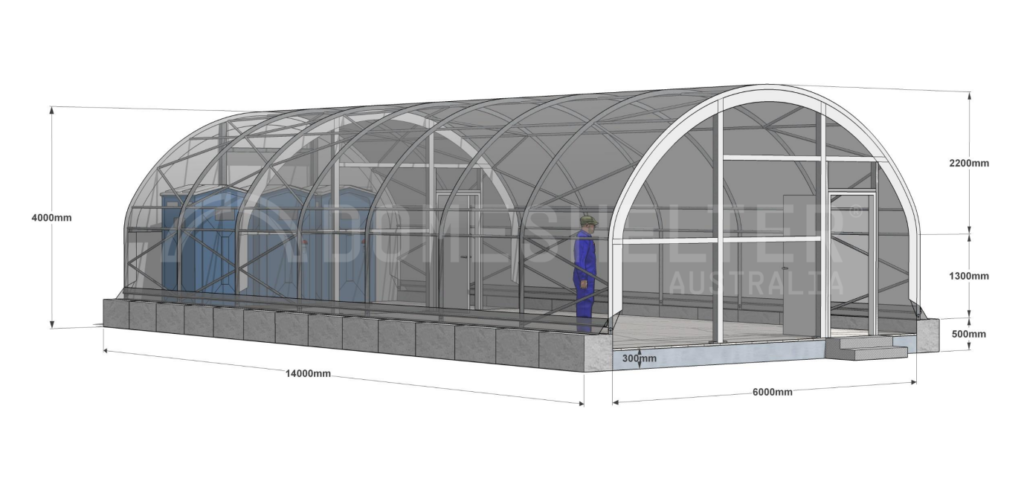
Concept drawing for a DomeShelter™ Structure designed to AS/NZS1170.3:2003, to suit conditions at the Mt Hotham Ski Field. Thicker bracings and closely spaced steel hoops make the Shelter able to withstand heavy snowfall.
How Do DomeShelter™ Structures Compare to Other Shelter Options in Snow?
Fabric Shelters are not necessarily better or more effective than other Shelter types in snow-related events. Any shelter correctly designed to the standards outlined in the Building Code of Australia (or the building code of any country) would be safe and suitable for use in snow.
The curved roof of a Fabric Shelter may be more suitable for regions that experience frequent snowfall than a structure with a flat roof, such as some kinds of sheds. The curve may help alleviate build-up of snow on the Shelter. However, especially in extremely heavy snowfall, this may not always be the case.
What is most important is ensuring you are dealing with a reputable supplier with a demonstrated understanding of the relevant codes and a reputation for providing safe, compliant structures. The failure risks associated with a building that is not designed for the correct force loads could be catastrophic.
